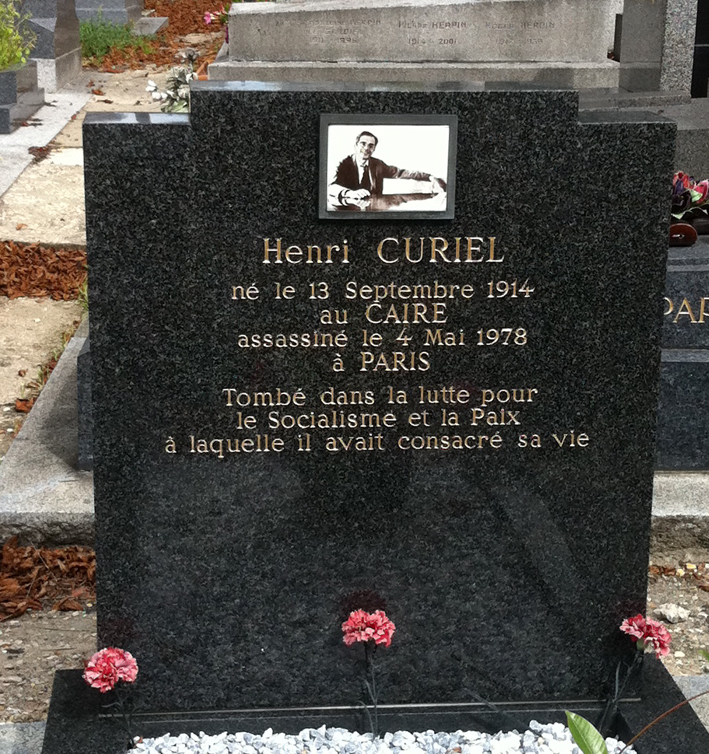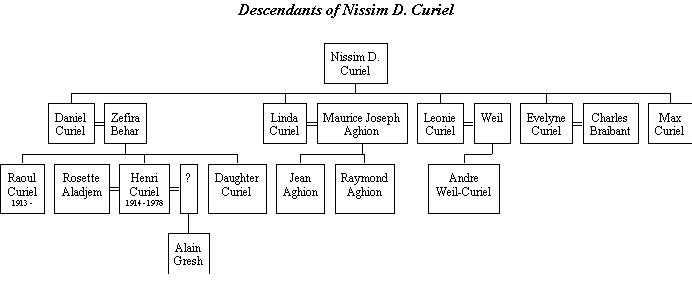On Zamalek's Hassan Sabry Street
Samir Raafat
Cairo Times, 12 October, 2000
Villa Curiel listed over the years as No. 42 Gabalaya; No. 36 Hassan Sabry; presently No. 14. Brazil Street
|
|
|
|
|
Cheers to our "talented" literature prize awardee. Your pain his gain !!!
|
|
|
EGY.COM - ZAMALEK
|
|
Samir Raafat
Cairo Times, 12 October, 2000
Of the 20 villas that stood on Zamalek's Hassan Sabry Street during WW2 only seven remain. No. 14 Brazil Street, today the Algerian Embassy in one of the survivors but what makes this mansion unique is that it is possibly the only Embassy building in Cairo that was allegedly donated to a state-in-the-making.
For that story we must go back in time when that part of the street was still known as Gabalaya and the villa in question listed as No. 42. Its owner was Daniel Nessim Curiel, the blind son of a usurer who made his fortune bankrolling peasants and small landowners during the latter part of the 19th century.
Second generation usurers such as Daniel were ennobled bankers even though their basic occupation consisted of cambio and money lending. Likewise, their clients used them to bridge finance their crops knowing they would never be aloud through the doors of the National Bank of Egypt or any other upright bank.
Having lived part of his adult life in the up-market island of Gezira, Daniel Curiel planned his new house meticulously. He would build it on that large empty tract of land across the street. It would be spacious so as to satisfy the needs of his wife Zefira and their two sons Raoul and Henri--a daughter had died in early childhood. The new house would be tall enough so that anyone wanting to admire the Nile could do so from the second floor. No question about the decorator; Jansen had been and still was the raging interior designer of the day. And if the villa's 17 rooms did not include servants' quarters--10 of them in the service of the Curiels, they would make do with the villa's basement.
Daniel Curiel also made plans for two exceptional rooms especially set aside for his personal relaxation. One room for his significant numismatic and medal collection estimated at thousands of pounds, and the second for respite at the piano. Two hobbies one seldom attributes to the sightless.
Cairo at the time did not want for first-rate architects so it was only a matter of price. And cost is precisely what delayed the project. This was 1929 and debt collectors across Egypt were in a fix. The New York financial crash had globalized which is why the Curiels remained a few more years in their old family house at No. 69 Gabalaya Street. Meanwhile the hackneyed employees in Curiel's grubby money-lending agency at No. 6 Chawarby Street in downtown Cairo would have to work overtime to recoup the losses.
It was only when the country's finances were in good shape in the mid-1930s that Villa Curiel went from blueprint to implementation. And if one believed the wags, Jansen's services had been discarded altogether. Yet judging from the Villa's exterior another stately residence had been added to Zamalek's already burgeoning repertoire. And even if the music room had to be shared with Zefira, herself a first rate pianist, everything else was roughly as Daniel Curiel had predicted. Well, almost.
Just like it had come about in other Zamalek stately homes, the children of the rich and famous were not as predictable as one imagined. There were those ready to rebel against their sagacious, avaricious and sometimes, bigoted parents.
Even amid the good living in Gezira, Cairo's best schools, the served meals with three servants in attendance, and the habitual summers in Europe, some youngsters like the French educated Raoul and Henri Curiel found time to flirt with Marxism. But in Henri's case things were very serious for he went as far as declaring himself an Egyptian communist.
But in this case the word 'Egyptian' is redundant since the Sephardic Curiels preferred Italian citizenship, a fact that did not prevent Daniel from opening his garden each Sunday to British officers and officials throughout WW2.
Singing La Marseillaise at school may have had something to do with the young Curiels' decision to end up in France rather than Italy. Raoul was first to go much to the distress of his father. A chagrin that paled however next to that brought on by Henri. It was shame and scandal when the family homestead was searched for concealed manifestos printed by Henri's bookshop Le RondPoint. Moreover, the unrepentant millionaire-communist preached l'Internationale all over Cairo's outlawed communist cells. Prime Minister Ismail Sidky who lived across the street and his tarboushed successors, had had enough with the founder of the Egyptian National Liberation Movement (MELN)
The fallout on Daniel Curiel's money-lending business was hurting.
 When Daniel Curiel died a broken man in November 1948 Henri was beginning a two-year tour of Egypt's prisons: Abbassia, Huckstep, Foreigner's Penitentiary and Oyoun Moussa in Sinai. Zafira finding the house Street overbearingly empty moved into a pension and leased Villa Curiel to Omar Chirine Bey and later to the Afghan Embassy.
When Daniel Curiel died a broken man in November 1948 Henri was beginning a two-year tour of Egypt's prisons: Abbassia, Huckstep, Foreigner's Penitentiary and Oyoun Moussa in Sinai. Zafira finding the house Street overbearingly empty moved into a pension and leased Villa Curiel to Omar Chirine Bey and later to the Afghan Embassy.
Henri Curiel was almost simultaneously released and expulsed from Egypt in 1950. He never returned to the family homestead on Hassan Sabry (now, Brazil) Street.
Here the stories about Villa Curiel's fate clash. One version says Henri Curiel donated his Zamalek mansion to President Ben Bella as the first Algerian embassy in Cairo. It is to be noted that the two men had become revolutionary comrades Henri providing the FLN (National Front) with tactical support and logistics.
But according to Algerian statesmen Lakhdar al-Ibrahimi it was President Gamal Abdel Nasser, not Curiel who offered the house to his government.
However the fact that Henri Curiel, 64, was gunned down by unknown assailants at the entrance of his Paris home in 1978, and that Nasser died eight years earlier, leaves Villa Curiel's bequeath open to speculation.


A good read re: Henri Curiel (picture) is Gilles Perrault's book "Un Homme A Part" editions Barrault 1984
Red= The House that Shrunk
Green = The Algerian Embassy--Villa Curiel
Blue = Villa Sidki Pasha
Pale Blue = Gabalaya House
Brown = Baehler Mansions
Yellow = Palais Toussoun
Purple = Villa Hug
Pink = Canadian Embassy
Reader's Comments |
|
|
|
|
|
|
|